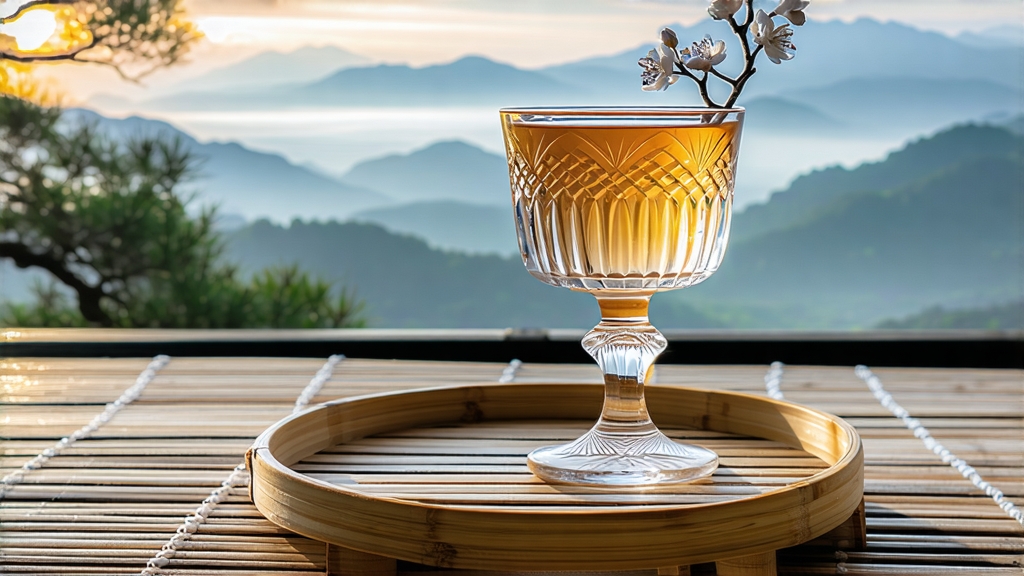
Bai Hao Yin Zhen—literally “White Hair Silver Needle”—is the quiet aristocrat of Chinese tea. To the uninitiated it may look like a jar of pale pine needles, yet once hot water meets these down-covered buds the liquor turns into liquid moonlight, releasing aromas of fresh alfalfa, rain-soaked pebbles and faint honey. International drinkers often meet white tea through bagged blends, but Silver Needle is the genre’s untouched manuscript: no rolling, no roasting, no fermentation beyond the slow breathing of the leaf itself. Understanding it is to witness how little intervention can create enormous complexity.
Historical whispers place the birth of Silver Needle in the mid-Jiangnan of the Song court (960-1279), yet verifiable records begin in Fuding county, Fujian, during the late Qing. Imperial tribute lists of 1796 mention “yi zhen cha” shipped north in small bamboo cylinders lined with rice paper. The buds were picked only in the first five days of early spring, when the mountain bamboo still wore frost and the tea bushes—Dabai and Dahao cultivars—awoke from winter dormancy. Caravans carried the tea over the Wuyi passes to the Min River, then by junk to Canton foreign hongs, where European merchants mistook the fuzzy buds for dried flowers and nick-named them “white down.” Silver Needle remained a curiosity until 1891, when a London auction catalogue praised its “delicate hay-like nose,” after which parcels appeared in Paris and St Petersburg apothecaries, sold as a “cooling” beverage for summer salons.
Today the Protected Geographic Indication restricts the name Bai Hao Yin Zhen to two Fujian counties—Fuding and Zhenghe—picked between mid-March and early April, when the bud reaches 2.5–3 cm but has not yet unfurled into a leaf. Two cultivars dominate: Fuding Dabai, which fattens the bud with down, and Zhenghe Dahao, slightly longer and more astringent. Purists debate which expresses the “true” character, but both must pass the “three whites” rule: bud plus the first two miniature leaves must be cloaked in silvery trichomes. A single kilo demands roughly thirty thousand buds, all plucked at dawn while the dew is still cold, because sunrise oils rise in the stem and blunt the ethereal aroma.
Processing sounds almost too simple to be art: wither, sort, dry. Yet each step is clocked by mountain air rather than factory schedules. The buds are spread one layer deep on bamboo sieves called shai qing, then left in a shaded corridor where mountain cross-breezes carry 65–70 % humidity. For thirty-six to forty-eight hours the tea master refuses to sleep, turning the buds every half hour so moisture exits evenly; too fast and the enzymes die, too slow and the bud oxidizes into a dull grey. When the bud snaps rather than bends, it is transferred to a charcoal-warm loft at 40 °C for gentle baking. Traditionalists use a pit of glowing lychee wood covered with rice paper; modern facilities opt for electric ovens calibrated to mimic the same infrared curve. The goal is 8–9 % residual moisture—low enough to store, high enough to let the tea age gracefully for decades.
Unlike green tea, Silver Needle appreciates time. A cake of compressed buds kept in porous Nanmu wood will darken from platinum to antique gold, developing notes of dried apricot and white truffle. A 2012 study at the Chinese Academy of Agricultural Sciences found that stored Silver Needle shows rising levels of gallic acid and theaflavins, antioxidants normally associated with black tea, proving that “non-enzymatic oxidation” continues in the absence of rolling. Connoisseurs now cellar the tea like Burgundy, marking vintages on clay jars and debating the optimal humidity band (55–65 %).
Brewing Silver Needle is an exercise in restraint. A gaiwan of 120 ml calls for three grams—about two heaped teaspoons—of buds. Water just off the boil, 85 °C, is poured from a height of ten centimetres so the stream oxygenates the liquor. The first infusion, twenty seconds, releases a pale celadon broth with a nose reminiscent of fresh cucumber skin